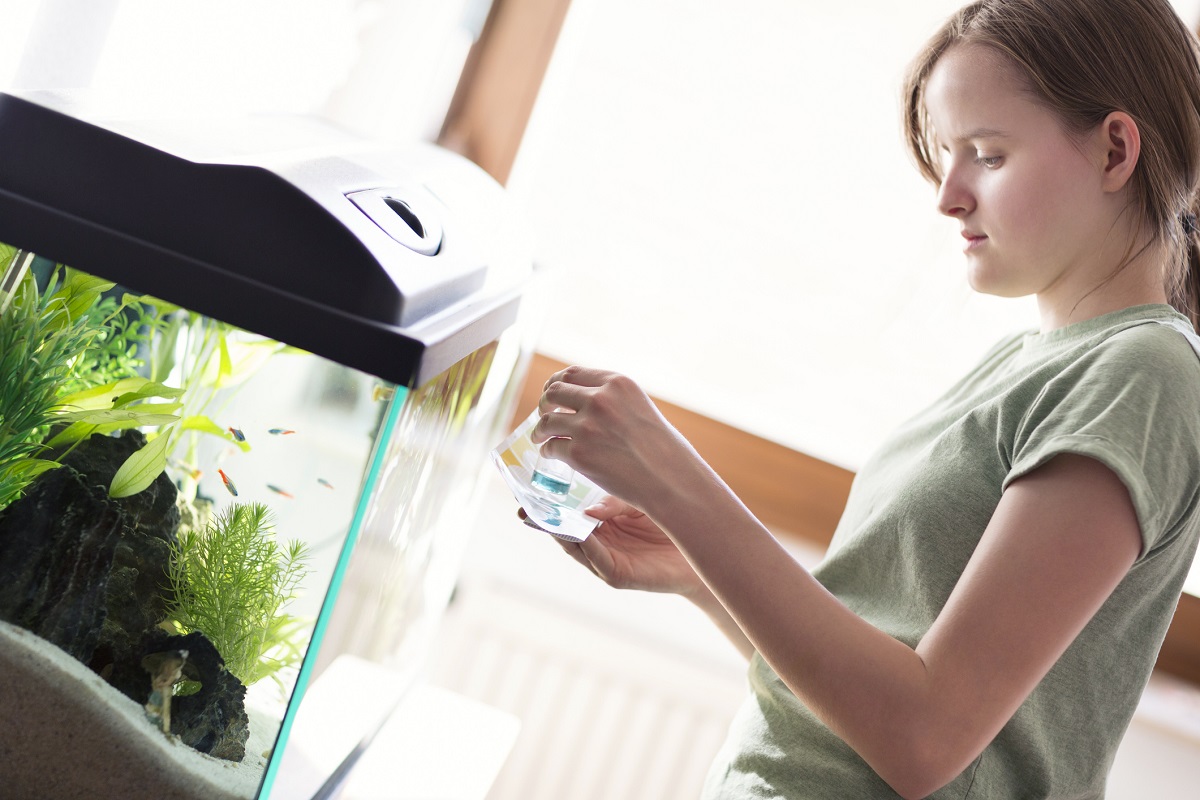Maintaining a healthy pH level is crucial for the quality of the water in your fish tank.
If the pH level becomes too high, the acidic water can harm your fish. Here’s what you should do if you’re dealing with an elevated pH.
Contents
What Is pH?

PH stands for potential or power of hydrogen. It measures whether a solution is acid or alkaline, with a pH of 7 indicating a neutral solution. A solution with a pH that goes from 0 to 6 is acidic, while a pH of 8 to 14 indicates an alkaline solution.
The pH scale works by measuring the concentration of hydrogen ions in a solution. You know that water molecules (H2O) contain oxygen and hydrogen atoms. However, these hydrogen atoms can move from one molecule to another. During this process, the molecules can gain or lose a charge.
A water molecule that loses a hydrogen atom becomes a hydroxyl ion (OH–). If a water molecule gains a hydrogen atom, it will become a hydronium ion (H3O+).
Hydroxyl ions make solutions alkaline or basic, while hydronium ions make things acidic. In a neutral solution, these two molecules are present in comparable quantities and create a balance by interacting with each other.
However, the presence of too many or too few hydrogen atoms can result in an unbalance and lead to a high or low pH. If these molecules can’t react with each other, they will start interacting with other elements, which is why alkaline or acidic solutions can result in strong chemical reactions.
Drops in pH levels are a more common issue, with overstocked tanks being a likely culprit. However, there are a few things that can cause pH levels to rise:
- Introducing alkaline water during water changes will create a pH unbalance.
- Some stones, rocks, and shells are rich in calcium. This mineral will cause high pH levels.
- Having too many plants in your setup will result in high oxygen levels and a higher pH.
Dangers of High pH in Aquariums
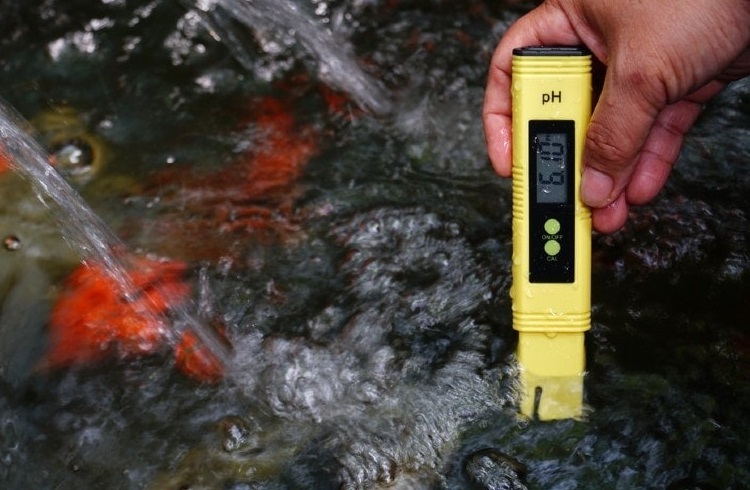
A high aquarium pH level means your tank has alkaline water. It can have disastrous consequences on your tank and its inhabitants.
One of the dangers of high pH is that alkaline water will damage the slime coat that fish rely on to ward off bacteria and parasites. Without this protective barrier, fish will be more likely to become ill or get parasites.
You might also see chemical burns on the scales, eyes, and gills of your fish. These chemical burns can be extremely painful and even result in death.
Plus, alkaline water will react with the ammonia that comes from fish waste and increase its toxicity. High levels of ammonia toxicity can result in ammonia burns and ammonia poisoning, which can be fatal.
A high pH level can also have an indirect effect on fish because of the way it reacts with plant life. Alkaline water promotes the growth of algae. It’s true that algae play a beneficial role in most aquariums by absorbing ammonia and producing oxygen.
However, because a tank is a closed environment, it can’t sustain an algae bloom for too long. Eventually, the algae will overgrow your tank and block light. It will also run out of nutrients and CO2. Without enough food and CO2, the algae bloom will start dying.
This process can result in a sharp drop in oxygen levels. Plus, dead algae will start decomposing and releasing nitrates, ammonia, and bacteria into the water.
How to Monitor pH in Aquariums
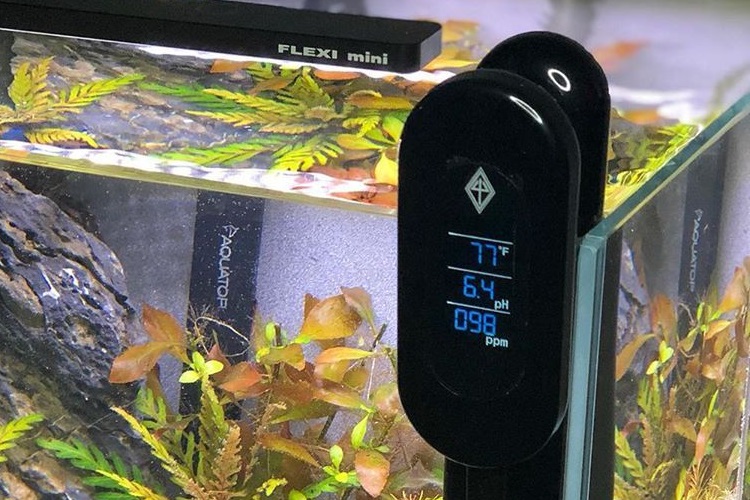
You should check the pH level in your aquarium water regularly. Testing it once a week is sufficient for healthy setups, but you can monitor it daily if there are issues.
Test strips are an easy and inexpensive way of testing pH levels, but they don’t yield the most accurate results. It’s best to invest in a monitor that displays constant pH readings or a digital pH meter. You can even find sensors that turn your smartphone into a digital pH meter.
Ideally, the pH level should be somewhere between 6.8 and 7.8 for a freshwater set. For salt aquariums, the pH level should be between 8 and 8.4. However, the ideal pH range can vary depending on the type of fish you keep.
Methods of Lowering pH in Aquarium
There are different ways of adjusting the pH level to create a healthy environment.
Chemical Solutions
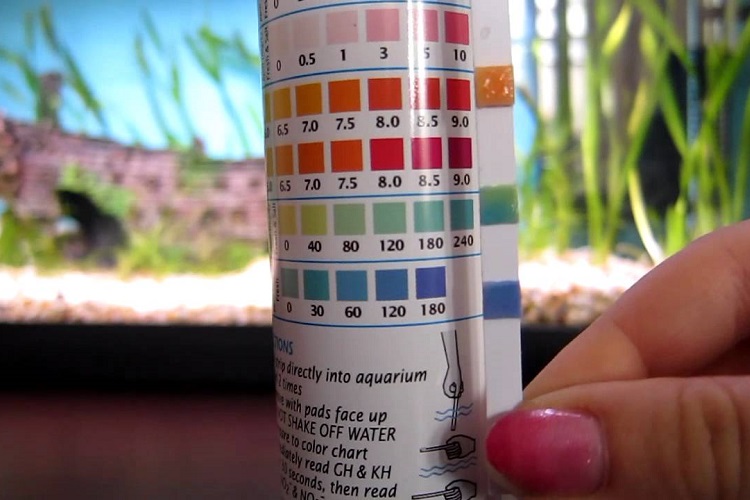
Chemical solutions are a great option because they start working right away and correct the pH level quickly.
Chemical products act as a buffer that will stabilize the pH level in your aquarium water and keep it within a certain range. You can adjust this range based on the dosage you use.
These products introduce molecules that will absorb the hydrogen atoms causing a pH unbalance. You’ll typically find products that use phosphate, bicarbonate, or carbonate to achieve this purpose. They are safe for marine and plant life and will make a great addition to your setup.
Driftwood
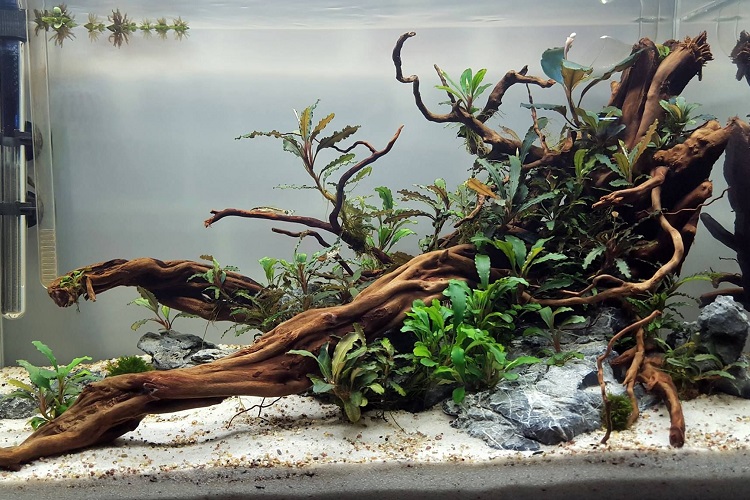
Besides being a popular aquascaping element, driftwood is also great for adjusting pH. All trees and plants, and by extension driftwood, contain compounds called tannins or polyphenols.
Tannins are what give wine and coffee their bitter taste. They also form acidic solutions, which can neutralize alkalinity.
However, tannins can give water a yellow or brown tint, and you’ll need a large piece of driftwood to make a difference. It’s not an ideal option for correcting pH levels right away, but it’s an element you should incorporate into your tank setup to help create a healthy balance.
Peat Moss
Peat moss is another safe and natural option for correcting pH levels. This type of moss releases gallic acid and tannins into the water. It can also absorb the minerals that might be contributing to the high concentration of hydrogen ions in the aquarium water.
It’s best to let peak moss soak before adding it to your fish tank to prevent it from coloring the water. The great thing about peat moss is that there are different ways of using it:
- You can use peat moss as an additional filtration layer in a canister filter.
- It can make a good substrate layer.
- You can also soak water in peat moss separately from your tank and add this water during a water change.
Catappa Leaves
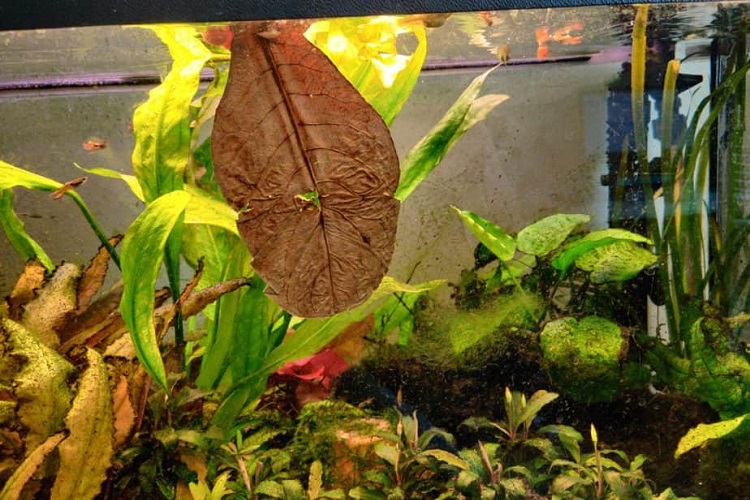
Catappa leaves, or Indian almond leaves, are a traditional medicine remedy that can help with bacterial and fungal infections.
They’re a great addition to your fish tank because they will release tannins in the water. Plus, their antibacterial properties can help keep your fish healthy if they have lost their slime coat.
You can place catappa leaves on the surface to create some shade, which is beneficial for some fish species but not ideal for others. You can also crush dried leaves and sprinkle them into the water. Note that catappa leaves can cause a dark tint in your water.
CO2 Reactors
The role of a CO2 reactor is to help CO2 dissolve into your tank water. Many setups use a CO2 tank to introduce enough carbon dioxide to support plant life. However, in many cases, the carbon dioxide will rise to the surface before plants can absorb it.
A popular solution is to use a diffuser that creates fine bubbles to help with absorption on the water surface. While there are benefits to having bubbles in your tank, diffusers typically have a limited effect on CO2 absorption.
The best way to get CO2 to dissolve into your tank water is to use a CO2 reactor. This device uses a reaction chamber where water absorbs CO2 before cycling back into your tank.
There are two benefits to using a CO2 reactor. First of all, CO2 reacts with water molecules to form H2CO3, also known as carbonic acid. Because this molecule is an acid, it can bring pH levels down and help balance your tank.
Secondly, plant life needs CO2. If you’re seeing high pH levels in your tank, algae are probably thriving. By introducing more CO2, you’re preventing the current algae bloom from dying due to limited resources, a process that can disrupt the oxygen balance in your tank and increase ammonia toxicity.
Water Changes

Regular water changes are a key part of aquarium maintenance. You should do water changes every two to four weeks and change 15 to 20% of the water depending on the size of your tank.
However, a pH unbalance might call for more frequent water changes. You can also change more than 20% of the aquarium water.
When you’re removing water for a water change, you’re also removing ammonia, minerals, and other compounds contributing to the pH unbalance. You’re also introducing water from an external source with a neutral pH, which should significantly lower the concentration of the hydrogen ions causing the pH unbalance.
However, if there is a problem with your setup, the pH will eventually rise again. Water changes aren’t a permanent solution, but it’s a crucial step for mitigating the negative effects of a high pH level and keeping your fish alive until you can address the underlying issue.
There are a few rules to follow when doing water changes:
- If you use tap water, you should let it sit for at least three days before adding it to your tank.
- Make sure the temperature of the water you’re adding matches the tank’s temperature.
- Always test the pH of the water you’re adding.
- You’ll want to use a dechlorinator to avoid adding more chlorine to your setup.
- Take advantage of water changes to clean your tank and remove algae manually if you’re dealing with an algae bloom due to high pH levels.
Reverse Osmosis Units

Reverse osmosis units are a type of water filtration system. These filters push water through a fine membrane that catches fine compounds that another filtration medium might miss.
The benefit of reverse osmosis filters is that they can remove solids that have dissolved in the water, including chlorine, toxins, or minerals. It helps purify the water and remove the compounds contributing to the pH unbalance.
The downside is that reverse osmosis units will also remove beneficial compounds, which means you’ll have to reintroduce these compounds. You might, for instance, need to add salt for a marine tank setup or reintroduce nutrients in the aquarium water to support plant life.
Using a reverse osmosis filter is a good option if you want more control over your setup, but keep in mind that it makes tank maintenance more complex since you have to reintroduce the beneficial compounds the filter removed.
Conclusion
It’s vital to keep an eye on pH levels to create a healthy setup where fish can thrive.
You should test pH regularly and take action if you notice an unbalance. The different methods listed above should help you restore a healthy pH level.

Ian Sterling, founder of Fishlab.com, began his aquarium journey over 30 years ago, driven by a deep fascination for fish and their diverse personalities. His website, Fishlab.com, is dedicated to making fishkeeping accessible and enjoyable, offering beginner-friendly guidance, expert insights, and a community for aquarists to connect and share experiences.


